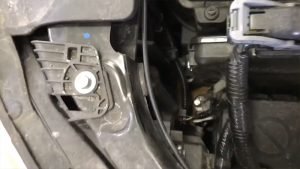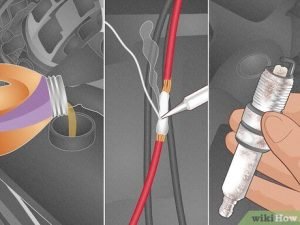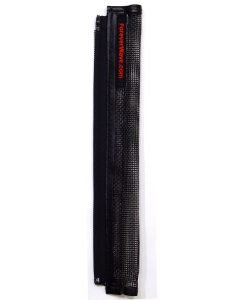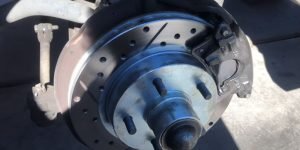
Contents
How to Change a Flat Tire Quickly and Safely: A Step-by-Step Guide
Finding yourself with a flat tire is never fun, but knowing how to change it quickly and safely can save you time, stress, and potentially, danger. This guide provides clear, step-by-step instructions to help you through the process. Remember safety is paramount: always prioritize your well-being and the well-being of others.
🛒 Recommended Product
Before You Begin: Preparation is Key
Before you even touch your flat, ensure your vehicle is parked on a level, stable surface far from traffic. Turn on your hazard lights immediately to alert other drivers. Engage your parking brake firmly. If you have them, use reflective triangles or flares to increase visibility, especially at night or in low-light conditions.
Gather your tools: You’ll need your spare tire, jack, lug wrench, and owner’s manual. Locate these items before you encounter a flat – knowing where they are beforehand saves precious time in an emergency. Your owner’s manual provides specific instructions for your vehicle model, so having it handy is crucial.
Step-by-Step Guide to Changing a Flat Tire:
-
Prepare the Area: Ensure the area around your vehicle is clear of obstacles. If possible, use wheel chocks (small blocks of wood or sturdy objects) behind the wheels opposite the flat to further prevent your car from rolling.
-
Loosen the Lug Nuts: Before jacking up your car, use the lug wrench to slightly loosen the lug nuts on the flat tire. Don’t remove them completely at this stage. This is much easier to do while the tire is still on the ground. Turn the wrench counterclockwise.
-
Position the Jack: Consult your owner’s manual to find the correct jacking point for your vehicle. Incorrect placement can damage your vehicle. Securely position the jack under this point.
-
Raise the Vehicle: Slowly and steadily raise the vehicle until the flat tire is a few inches off the ground. Don’t raise it too high. Only enough to remove the flat and install the spare.
-
Remove the Flat Tire: Now, completely unscrew the lug nuts and carefully remove the flat tire. Keep the lug nuts together in a safe place to avoid losing them. You may need to pull or gently rock the tire to remove it from the wheel hub.
-
Mount the Spare Tire: Align the spare tire with the wheel studs and push it onto the wheel hub. Ensure it sits firmly and evenly.
-
Tighten the Lug Nuts: Hand-tighten the lug nuts. Then, using the lug wrench, tighten them in a star pattern (opposite nuts first, then the ones in between). Don’t overtighten them at this stage.
-
Lower the Vehicle: Slowly lower the vehicle using the jack. Once the tire is on the ground, fully tighten the lug nuts using the lug wrench in a star pattern.
-
Final Checks: Double-check that all lug nuts are securely tightened. Store the flat tire, jack, and lug wrench properly. Check your tire pressure and adjust if needed. Remember, spare tires often have different speed and pressure limits – check your owner’s manual for details.
-
Proceed with Caution: Drive carefully to the nearest tire repair shop or service center. Spare tires are typically temporary and may not be suitable for high speeds or long distances.
Common Mistakes to Avoid:
- Not using the parking brake: This is crucial for safety and preventing your vehicle from rolling.
- Improper jack placement: Consult your owner’s manual for correct jacking points to avoid damage.
- Overtightening or under-tightening lug nuts: This can damage the wheel or cause the wheel to come loose.
- Ignoring the spare tire’s limitations: Spare tires often have speed and distance restrictions.
- Not checking tire pressure: Maintaining correct tire pressure is crucial for safety and handling.
Changing a flat tire can seem daunting, but with careful preparation and these step-by-step instructions, you can handle it confidently and safely. Remember, if you’re ever unsure or uncomfortable, don’t hesitate to call for roadside assistance. Your safety is always the top priority.
🛒 Recommended Product
FAQ
Q. What tools do I need to change a flat tire?
A. You’ll need a spare tire (make sure it’s properly inflated!), a jack, a lug wrench, and owner’s manual (to locate your spare and understand your vehicle’s specific jacking points). Gloves are also recommended to keep your hands clean. A wheel chock can improve safety.
Q. Where is the best place to change a flat tire?
A. Choose a level, stable, and safe location away from traffic. Pull as far off the road as possible, turn on your hazard lights, and if possible, use warning triangles or flares to alert other drivers.
Q. How do I use a jack safely?
A. Consult your owner’s manual for the correct jacking points on your vehicle. Place the jack firmly on a solid, level surface. Slowly and steadily raise the vehicle until the flat tire is a few inches off the ground. Never work under a vehicle supported only by a jack.
Q. How do I loosen and tighten the lug nuts?
A. Before jacking up the vehicle, slightly loosen the lug nuts using the lug wrench. This is much easier to do while the tire is still on the ground. After jacking, remove the lug nuts completely and carefully set them aside (in a safe place, such as the hubcap). After installing the spare, tighten the lug nuts by hand, then lower the vehicle slightly and tighten them further using the lug wrench in a star pattern (opposite nuts) to ensure even pressure.
Q. What should I do after changing the tire?
A. Once the spare is securely in place, lower the vehicle completely. Double-check that all lug nuts are tight. Store the flat tire and your tools safely. Get your flat tire repaired or replaced as soon as possible; spare tires are usually not meant for extended use or high speeds.
Q. What if I can’t change the tire myself?
A. If you’re uncomfortable or unable to change the tire yourself, call for roadside assistance. Many auto insurance policies and roadside assistance programs offer this service. Don’t attempt to drive on a flat tire as this can damage your wheel and suspension.
Q. My spare tire is different from my other tires. What should I know?
A. Many vehicles come with a smaller, temporary spare tire. These often have speed and inflation pressure limitations. Check your owner’s manual for the specific restrictions and adhere to them carefully. You might not be able to drive as fast or as far as usual on a temporary spare.
Related Articles
How to Remove Pet Hair from Car Seats
How to Remove Pet Hair from Car Seats: A Comprehensive Guide Do you love your furry friend but dread the inevitable aftermath of their car rides? Pet …
How to Clean Car Upholstery at Home
How to Clean Car Upholstery at Home: A Step-by-Step Guide Keeping your car’s interior clean and fresh is crucial for both aesthetics and hygiene…
How to Install a Rearview Camera in Your Car
Back Up Safely: A Comprehensive Guide to Installing a Rearview Camera Driving has become significantly safer with the advent of rearview cameras. Thes…
Affiliate Disclosure: As an Amazon Associate, I earn from qualifying purchases made through links on this site.









